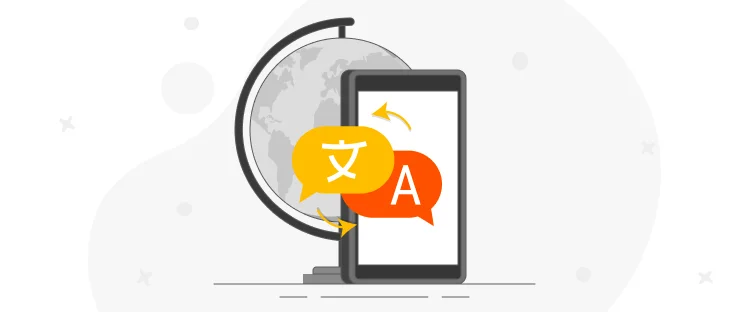To go international, if you are developing for just one region, you are getting only a piece of a pie. In particular if you are developing for North America, you are only getting 11.4% of internet users. Let’s look at with another perspective which is internet users by language. If you are just developing for a particular language, you are getting only a piece of pie. Specifically if you are developing just for English by using language translation services, you are getting about ¼ of Internet users. But more importantly you are missing out 75% Internet users, which can be cope up by English Safety Datasheets translation services.
These few reasons are enough to evidence to show why it make sense and in today’s world, developing for global audience is not a luxury but it is really necessary and it’s a huge potential opportunity there as well. So the question what you have to do go global? One thing you should make clear is developing for global audience is not just getting your app translation services. You can think of going global as a two step process.
It is designing and coding to enable support for language, region, and cultural differences. It includes things like externalizing localizable resources, presenting dates, time, number format in a local relevant form, processing, user input, sorting data, and supporting character in all languages. Design your product to be language and region independent. Essentially designing your product to be language and region independent is an important consideration. Internalization and design when done right from very beginning can help you be successful in your international efforts.
In terms of localization, it’s adopting the look and feel of your product, of your app, for language, regions, and cultures. In includes translation, local defaults, and custom features. Localize by taking help from professional document translation services like English Safety Datasheets translation services.
The four main problems faced by the translator while translating the content are:
If you get the internalization and localization design right from the beginning, it would useful to be successful from an internationalization perspective. To design your system, your architecture to keep it right from the beginning you can follow these aspects:
Second aspect is of localization, externalizing your resources, that those could be strings, images. For example translating the world hello world string extracted and then translated localized into as many languages that you are targeting. And having those then externalizes and then once you get them back for the right locale, this overall is the full picture in terms of localization.

It's the 21st century, and translation has become an important part of every industry. It is an inevitable part of
Read More
The medical industry is constantly evolving and clinical research trials play an important role. These trials are responsible for finding
Read More
Neural machine translation is a tool to automate translation through an end-to-end learning mode. It is a neural network of
Read More
We know the importance of translation in not just the business world but in the interconnected world we all live
Read More
The importance of language translation solutions in today’s globalized world is well established. The accuracy of translations is the one
Read More
The global marketplace has become an attractive place for brands and businesses, where they strive to create a presence of
Read More
With many languages spoken worldwide, there’s a need for solutions to enable effective communication between people speaking different languages. The
Read More
With the increased rate of internet penetration and mobile phone usage, apps are the digital products that we use daily.
Read More
Language contributes to our culture and identity. It shapes our individual and group identities. It shows our social surroundings, upbringing,
Read More


Document Translation
Professional document translation by native expertsApp Localization
Get more downloads by adapting your app for different target marketsVideo Translation
Multilingual translation and subtitling servicesWebsite Localization
Adapt your website into multiple contexts for global reachSoftware Localization
Adapt your software for global usersGame Localization
Reach new players with localized gameplayMTPE
Refine AI translations for natural fluencyBusiness Translation
Professional translation for business documents and websitesDTP & File Conversion
Professional DTP and File conversion, supporting multiple file formatsProofreading
Perfect your content with expert review© Copyright 2025 MarsTranslation